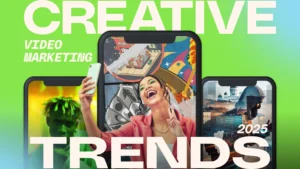In the realm of digital storytelling, controlling the narrative through video is paramount for conveying your message effectively and engaging your audience. Whether for marketing, education, or entertainment, the ability to steer the narrative allows creators to shape perceptions, evoke emotions, and drive action. This guide outlines key strategies for mastering narrative control in your video content.
Partnering with a professional video production company Las Vegas can provide invaluable expertise, ensuring that your story is told with precision. From the dynamic landscape of Las Vegas video production to the expertise of top film production Las Vegas, collaborating with experienced teams enhances the overall impact of your video. Whether it’s a corporate project or a creative endeavor, working with Las Vegas video productions can take your narrative to new heights.
Understanding Narrative Control in Video
The Importance of Narrative Control
Narrative control in video isn’t just about telling a story; it’s about guiding your audience through a journey, ensuring they receive the message as intended. It involves strategic planning from the inception of the idea to the final edit.
Examples of Effective Narrative Control
Analyzing successful video campaigns or films can provide insights into how narrative control can captivate and influence an audience. From Apple’s emotive product ads to impactful documentary films, effective narrative control keeps viewers engaged and invested in the story.
Crafting a Compelling Script
Outlining Your Story
Start with a clear outline that delineates the beginning, middle, and end of your story. Define the main message, the conflict, and the resolution to ensure your narrative has direction and purpose.
Developing Characters and Plot
Characters drive the story. Even in non-fictional narratives, presenting your subjects as characters with goals, challenges, and growth can enhance engagement and empathy among viewers.
Visual Storytelling Techniques
Composition and Framing
The visual composition of your shots can tell a story within a story. Use framing, the rule of thirds, and other compositional techniques to direct the viewer’s attention and highlight key narrative elements.
Lighting and Mood
Lighting is a powerful tool for setting the tone and mood of your video. Manipulate lighting to complement the story, whether it’s creating suspense, joy, or sadness.
The Power of Editing
Pacing and Timing
Editing controls the pace and timing of your video, which are crucial for maintaining interest and emphasizing key moments. Use cuts, transitions, and pacing to keep the story flowing and engaging.
The Role of Transitions
Transitions between shots aren’t just technical necessities; they’re opportunities to reinforce the story, signify changes, or connect different story elements cohesively.
Incorporating Sound and Music
Enhancing the Narrative with Sound
Sound effects and ambient sounds add depth to the narrative, grounding the story in reality or enhancing its emotional impact.
Music as an Emotional Guide
Music guides the viewer’s emotional response. Carefully selected tracks can subtly influence how the story is perceived and felt.
Leveraging Camera Techniques
Camera Movements
Movements like pans, tilts, and dolly shots can emphasize aspects of the story, create dynamism, or focus attention on specific story elements.
Angles and Perspectives
Different camera angles and perspectives can dramatically alter how a scene is interpreted, influencing viewer empathy, understanding, and engagement with the story.
Interactive Elements and Viewer Engagement
Encouraging Viewer Participation
Incorporating interactive elements, such as choice-driven narratives or branching paths, can give viewers a sense of control and investment in the story’s outcome.
Utilizing Feedback Loops
Engage with your audience through comments, polls, or social media to understand how they perceive the story. This feedback can inform future content and narrative adjustments.
The Role of Social Media in Narrative Control

Platform-Specific Strategies
Different social media platforms offer unique ways to control and adapt your narrative, from Instagram stories that offer bite-sized content to YouTube videos that allow for deeper exploration.
Engaging with the Audience
Direct engagement with viewers through social media can help steer the narrative, allowing creators to address questions, clarify intentions, and deepen the narrative’s impact.
Challenges in Controlling the Narrative
Overcoming Misinterpretations
Despite careful planning, narratives can be misinterpreted. Addressing these through follow-up content or direct engagement can help realign the audience’s understanding.
Addressing Viewer Feedback
Negative or constructive feedback is an opportunity to refine your narrative control strategies, ensuring your message is clear and impactful.
Case Studies: Successful Narrative Control
Analysis of Successful Campaigns
Examining case studies of video campaigns or series that successfully controlled their narrative can provide valuable lessons and strategies that can be applied to your own content.
Lessons Learned
Each case study offers unique insights into narrative control, from the importance of audience understanding to the impact of visual and auditory elements. Working with top production companies in Las Vegas can bring these insights to life, ensuring your video effectively communicates your message. Controlling the narrative through video is a multifaceted skill that combines creative storytelling with strategic planning and audience engagement.
By partnering with expert video production in Las Vegas, creators can apply these techniques to elevate their content. By harnessing the skills of video production Las Vegas, video creators can ensure their message not only reaches but resonates with their intended audience, driving the desired action and fostering a deeper connection.
To book our services, kindly send us an email at Art@HUSTLMedia.com or directly call us at (702) 980 -9620. You may also learn more about us and our campaigns by visiting our website – HUSTL Media.




